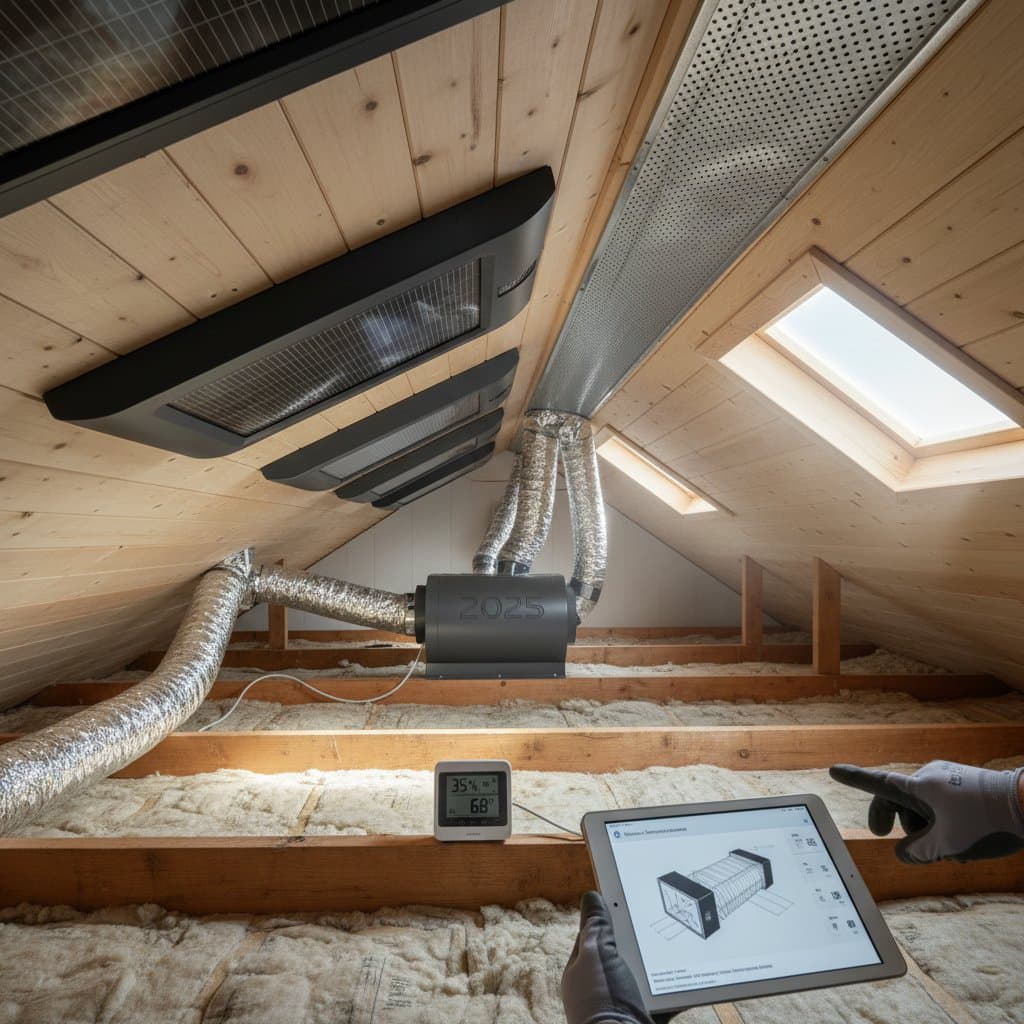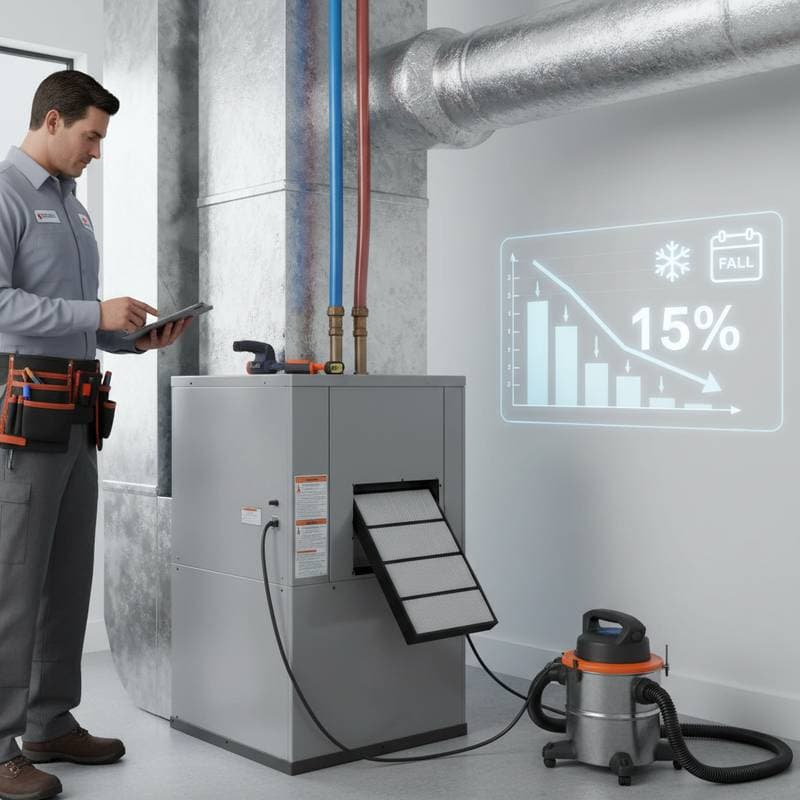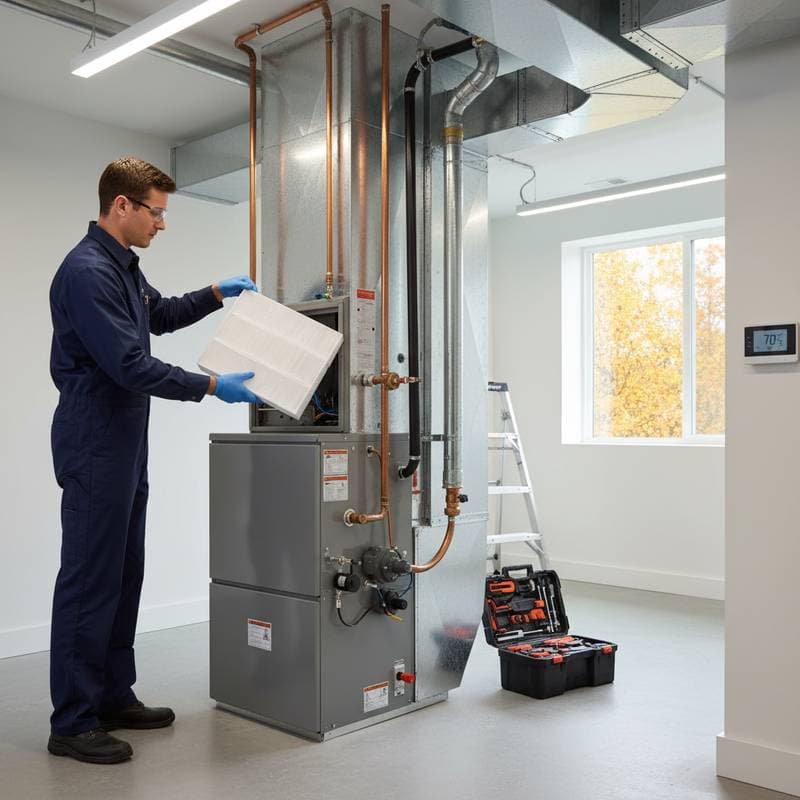The Essential AC Maintenance Checklist for a Cool Summer
Summer heat demands a dependable air conditioning system. A properly maintained unit delivers consistent cooling, controls energy expenses, and minimizes unexpected failures. Homeowners often overlook maintenance until discomfort arises, allowing minor issues to escalate into costly repairs. Proactive preparation through a structured checklist addresses these risks before temperatures rise.
This guide presents a complete AC maintenance routine. It progresses from basic cleaning tasks to detailed inspections and professional evaluations. Follow these steps to optimize performance and extend the lifespan of your equipment.
Step 1: Replace or Clean the Air Filters
Air filters capture dust, pollen, and debris, protecting the system from internal damage. Clogged filters restrict airflow, reduce efficiency, and strain the blower motor. Check filters monthly during peak usage, and replace them every one to three months depending on household activity and air quality.
Locate the filter in the return air duct or furnace cabinet. Slide out the old filter and note the airflow direction indicated by the arrow. Install a new filter with a MERV rating suitable for your unit, typically between 8 and 13, to balance filtration and airflow. Clean reusable filters by vacuuming or washing according to manufacturer instructions, then allow them to dry completely before reinstallation.
Step 2: Clean the Condenser Coils
The outdoor condenser unit expels heat absorbed from indoors. Accumulated dirt, leaves, and grass restrict heat dissipation, causing the compressor to overwork and consume more energy. Regular cleaning maintains optimal heat transfer and prevents overheating.
Begin by shutting off power to the unit at the breaker or disconnect switch to ensure safety. Gently rinse the coils with a garden hose, starting from the top to wash away loose debris. Clear vegetation and debris from the base, maintaining at least two feet of clearance around the unit for proper ventilation.
Refrain from using high-pressure washers, as they may bend the delicate fins. Harsh chemicals can corrode surfaces, so opt for mild detergent if needed. For severe accumulations, engage a professional service to avoid potential damage.
Step 3: Clean the Evaporator Coils
Inside the indoor unit, evaporator coils absorb heat from the air. Dust and mold buildup on these coils impairs cooling capacity and promotes microbial growth. Cleaning restores efficiency and improves indoor air quality.
Access the evaporator coils through the access panel on your furnace or air handler. Use a soft brush or vacuum with a brush attachment to remove surface dust. For deeper cleaning, apply a no-rinse coil cleaner spray, allowing it to foam and dissolve residues before the system resumes operation.
If coils appear heavily soiled or iced, professional assistance is advisable. Technicians use specialized tools to clean without risking system components. Perform this task annually or as recommended by your unit's manual.
Step 4: Examine Ductwork and Vents
Efficient air distribution relies on intact ductwork and unobstructed vents. Leaks or blockages lead to uneven temperatures and wasted energy. Inspecting these elements ensures balanced cooling across your home.
Examine visible ducts in attics, basements, or crawl spaces for gaps, dents, or disconnected joints. Seal minor leaks with mastic sealant or aluminum foil tape, avoiding cloth-backed duct tape that deteriorates over time. Test for leaks by pressurizing the system or using a smoke pencil to detect air escape points.
Open all supply and return vents fully, and ensure no furniture, rugs, or curtains impede airflow. Adjust dampers if your system includes them to promote even distribution. Addressing these issues can improve efficiency by up to 20 percent.
Step 5: Calibrate the Thermostat
The thermostat regulates system operation, signaling when to cycle on or off. An inaccurate or malfunctioning thermostat causes short cycling or constant running, both of which increase wear and energy use. Proper calibration maintains precise temperature control.
Verify the thermostat location away from direct sunlight, drafts, or heat sources that skew readings. For programmable models, set schedules to raise temperatures when the home is unoccupied, saving energy without sacrificing comfort. Test accuracy by comparing it to a separate thermometer placed nearby.
If discrepancies exceed two degrees, replace batteries or recalibrate according to the manual. Consider upgrading to a smart thermostat for remote access and automated adjustments. These devices often integrate with home automation systems for enhanced control.
Step 6: Inspect the Electrical Connections
Secure electrical connections prevent intermittent failures and fire hazards. Corrosion or looseness in wiring disrupts power flow, leading to erratic operation or complete shutdowns. Routine checks safeguard reliability.
With power disconnected, open the outdoor unit's access panel to examine the contactor, capacitor, and wiring terminals. Tighten any loose connections using a screwdriver, and clean corrosion with a wire brush and electrical contact cleaner. Look for signs of overheating, such as discolored or melted insulation.
Electrical work involves inherent risks, so consult a licensed technician if you lack experience. Professionals verify voltage levels and component integrity using multimeters. Compliance with local electrical codes is essential for safety.
Step 7: Test Refrigerant Levels and System Performance
Refrigerant circulates to transfer heat, and low levels indicate leaks that compromise cooling. Adequate refrigerant ensures the system operates at designed efficiency. Testing identifies issues early to avoid compressor damage.
Observe the system during operation for normal sounds and airflow strength. Measure temperature drop across the evaporator coil, aiming for 15 to 20 degrees Fahrenheit between return and supply air. Listen for unusual noises like hissing, which may signal refrigerant leaks.
Refrigerant handling requires EPA certification, so hire a professional for level checks and recharges. They use gauges and detectors to assess and repair as needed. Annual testing prevents efficiency losses and extends system longevity.
Step 8: Schedule Professional Maintenance
DIY efforts provide a strong foundation, yet experts detect subtle issues invisible to untrained eyes. Comprehensive inspections cover refrigerant, electrical, and mechanical components thoroughly. Professional service confirms peak condition before seasonal demands.
Contact a certified HVAC technician for an annual tune-up, ideally in late spring. The visit typically includes deep cleaning, performance diagnostics, and lubrication of moving parts. Discuss maintenance contracts for priority service and discounts on repairs.
Technicians also advise on system upgrades, such as variable-speed units for better efficiency. This step integrates all prior maintenance into a holistic evaluation.
Sustaining Long-Term Efficiency
After completing the checklist, establish ongoing habits to preserve performance. Monitor energy bills for unusual spikes, and conduct monthly visual inspections of the outdoor unit. Log maintenance dates to track filter changes and service intervals.
These practices not only enhance comfort but also reduce environmental impact through lower energy consumption. Your investment in the AC system yields returns in reliability and cost savings. Implement this routine annually to navigate summers with confidence.





